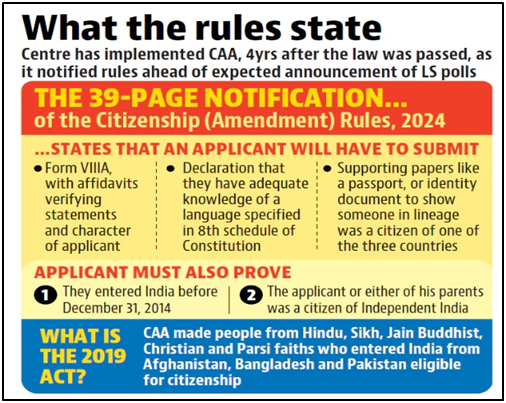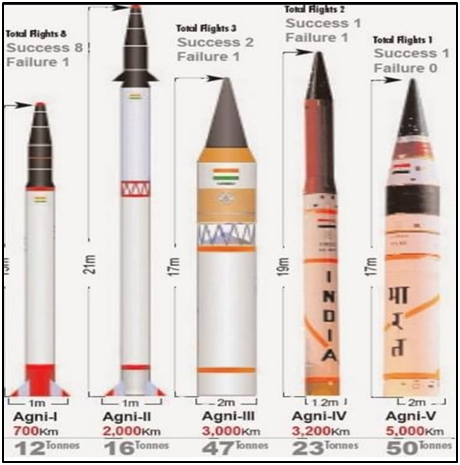Editorials & Articles – 12 March 2024
Editorials & Articles – 12 March 2024
Central transfers and the issue of shares of some States
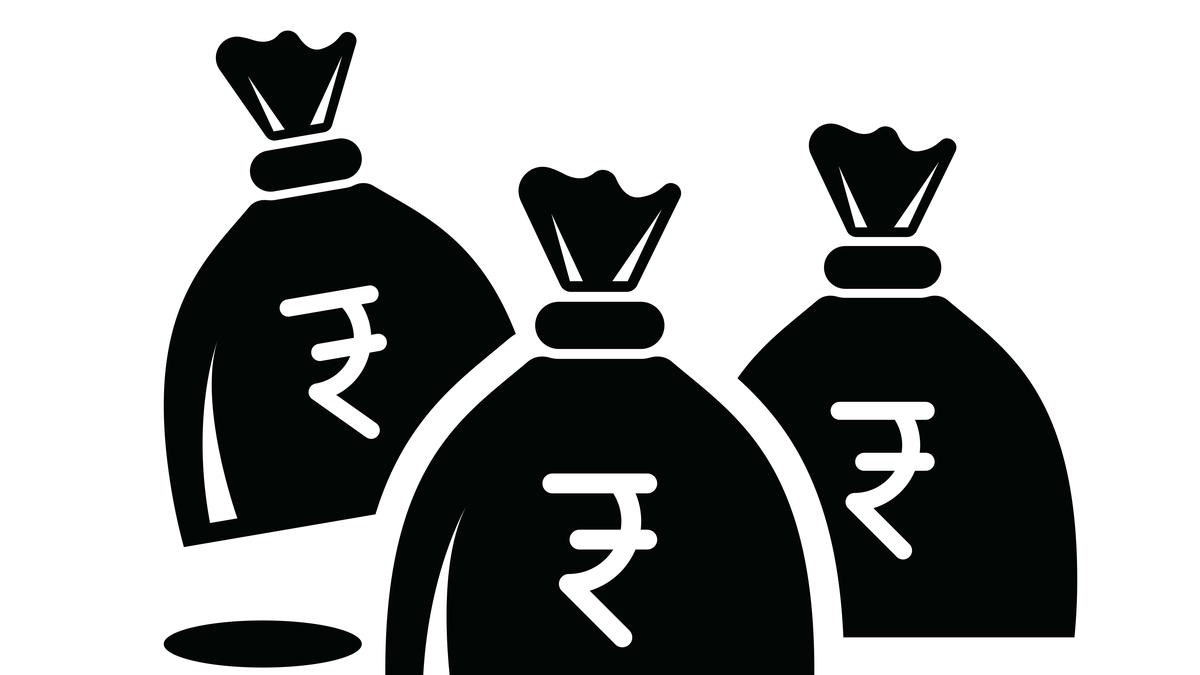
| Topic: GS2 – Indian Polity – Devolution of power and finances Critical for UPSC as it addresses the evolving dynamics of resource distribution among Indian states, focusing on Finance Commission’s criteria. |
| Context |
|
Introduction:
- The Sixteenth Finance Commission faces a critical issue raised by southern Indian states regarding a decline in their share of resources transferred from the Centre.
- This decline has been observed over successive Finance Commissions, prompting a need for examination and potential solutions.
Analysis of State Shares:
- Data from the Twelfth to the Fifteenth Finance Commission shows a consistent decrease in the share of southern states, dropping from 19.785% to 15.800%.
- Northern and eastern states also experienced declines, while hilly, central, and western states, including Maharashtra, gained.
- The income distance criterion, a key determinant, resulted in the loss of 8.055% points for southern states between the Thirteenth and Fifteenth Finance Commissions.
Role of Distance Criterion:
- The distance criterion, weighted at 50% by the Eleventh Finance Commission, was reduced to 45% by the Fifteenth Finance Commission.
- The income distance criterion significantly impacted the share of southern states, illustrating that states farther from the highest income state receive a higher share.
- Despite the distance criterion contributing to gains for low-income states like Bihar and Uttar Pradesh, overall losses occurred due to other criteria.
Population Criterion Controversy:
- The Fifteenth Finance Commission used 2011 population data, departing from the previous use of 1971 data, causing some controversy.
- The introduction of the demographic change criterion aimed to mitigate the impact on states showing better fertility rate reduction performance.
Potential Steps Forward:
- Despite the legitimacy of questions about the indefinite use of the income distance criterion, abandoning it entirely is not feasible.
- The Sixteenth Finance Commission could consider reducing the weight of the income distance criterion by 5% to 10% points while increasing weights for other criteria.
- Addressing the quantum of the divisible pool is crucial; the increase in cesses and surcharges by the Centre has reduced the size of the pool.
- A proposal to limit the share of cesses and surcharges to 10% of the Centre’s gross tax revenues may help maintains a fair distribution.
- The decline in the states’ share, despite the acceptance of the Fourteenth Finance Commission’s recommendation to raise it to 42%, underscores the need for attention and potential corrective measures.
Conclusion:
- In addressing the concerns raised by certain states regarding declining shares, the Sixteenth Finance Commission could consider recalibrating the weightage of the income distance criterion.
- And also addressing the impact of cesses and surcharges on the divisible pool, ensuring a more equitable distribution of resources among states.
| 16th Finance Commission |
● Scope: 1. Deciding the distribution of central tax revenue with states. 2. Allocating grants-in-aid to states from the central government. 3. Suggesting measures to strengthen the financial resources of local bodies like Panchayats and municipalities. ● Timeline: 1. Terms of reference defined in December 2023. 2. Expected to submit recommendations by October 31, 2025. |
A tribe in the Western Ghats in need of a lifeline
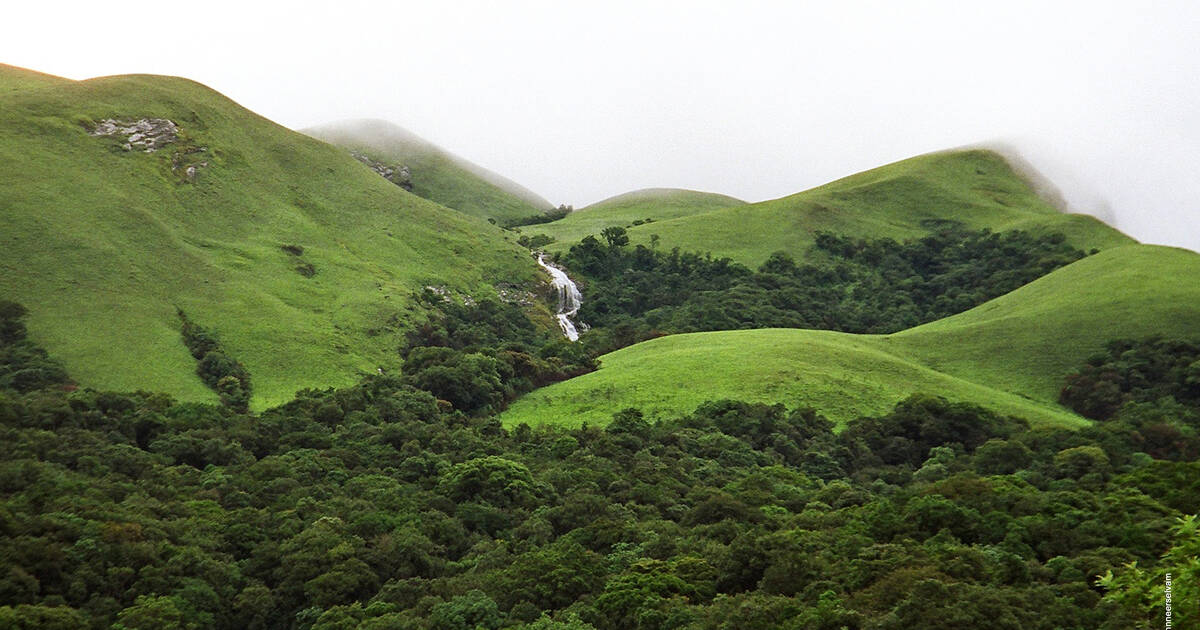
| Topic: GS2 – Social Justice – Vulnerable Sections Significant for UPSC as it highlights challenges faced by tribal communities post-Forest Rights Act, emphasizing socio-economic complexities and governance gaps. The Information mentioned in the article can be used as a case study in UPSC mains answers. |
| Context |
|
Overview:
- The article explores the socio-economic conditions of the ‘Phani Yerava’ tribe in Makuta village, Karnataka, focusing on their successful land claims under the Forest Rights Act in 2021.
Land Rights Success:
- With local assistance, 19 Yerava households secured land rights through joint surveys by Forest, Revenue, and Social Welfare Departments.
- The village is situated in the Talacauvery sub-cluster, a designated World Heritage Site in Karnataka, known for dense tropical evergreen forests.
Changing Livelihoods:
- Despite acquiring forest rights, the Yeravas show reduced enthusiasm for forest-dependent livelihoods due to challenges in collecting minor forest produce.
- The tribe has shifted to daily wage labour, primarily in Kasaragod, Kerala, emphasizing language comfort in Malayalam.
- Minor forest produce like fuelwood, honey, incense, and shekakai (soap pod) are still collected but mostly for personal consumption, not commercial purposes.
Alcohol Abuse Concerns:
- A significant concern is the rampant alcohol abuse observed in the community post-Forest Rights Act implementation.
- The habit negatively impacts daily life, affecting children’s school attendance and overall community well-bei
- Officials from the Department of Social Welfare express concern and initiate de-addiction drives, acknowledging the disheartening state of the habitants.
Impact on Documentation:
- Alcohol abuse has led to a lack of awareness and engagement with external affairs, necessitating the safekeeping of essential documents with non-tribal members.
Broader Social Issues:
- NGOs and officials highlight the insufficient attention given to such social issues in state policies, echoing concerns raised by local tribal communities like Hasalaru, Gowdalu, and Jenu Kurubas.
- Leaders of these communities stress the need for government intervention to address addiction and other existential concerns among forest dwellers.
Call for Government Action:
- The government should prioritize social issues affecting tribal communities, emphasizing that effective interventions are crucial for addressing challenges like addiction among forest dwellers.
Time to prohibit judges from joining politics
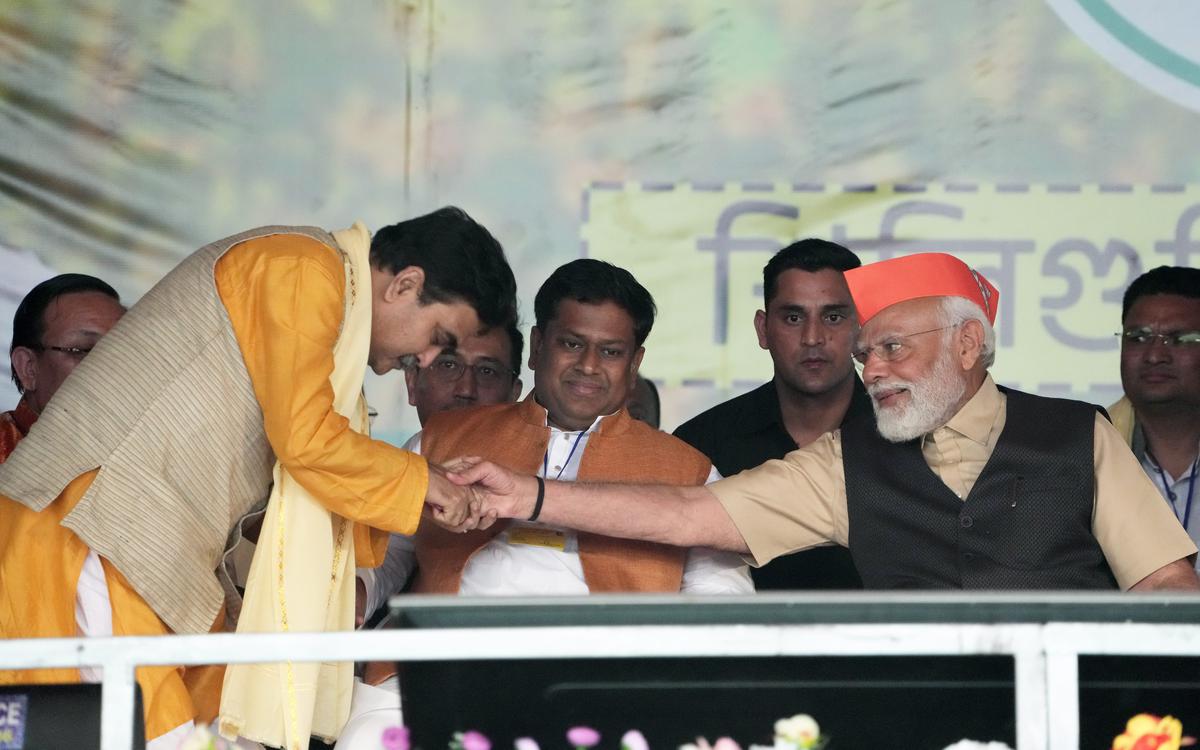
| Context |
|
Overview:
- Justice Abhijit Gangopadhyay resigned from the Calcutta High Court, joining the BJP, sparking debates on post-retirement judicial conduct and political affiliations.
Judicial Conduct Concerns:
- Gangopadhyay faced controversies during his judgeship, including a TV interview criticizing the West Bengal government and defiance of a division bench order.
- The Chief Minister questioned the credibility of his judgments, emphasizing the need for judicial accountability.
Cooling-off Period Debate:
- Former Union Minister Arun Jaitley’s suggestion of a cooling-off period for judges post-retirement is Important in this context, with Gangopadhyay asserting no existing rule.
Constitutional Assembly’s Stance:
- The Constituent Assembly rejected suggestions of legally barring judges from executive posts, prioritizing judicial independence over external regulations.
- Judges of constitutional courts enjoy powers and privileges, with impeachment as the almost unworkable method of removal, highlighting their protected status.
Judicial Conduct Standards:
- The Constitution and the Bangalore Principles of Judicial Conduct identify six core values of the judiciary – Independence, Impartiality, Integrity, Propriety, Equality, Competence and Diligence, guiding judges’ behaviour in and out of court.
- Specific clauses address the prohibition of comments affecting case outcomes and the requirement to disqualify oneself if impartiality is compromised.
- The global acceptance of the Bangalore Declaration reinforces the need for judges to maintain public, legal, and litigant confidence in their impartiality.
Opportunity for Reform:
- The current episode is seen as an opportunity for the Chief Justice of India and the Supreme Court to investigate and prevent similar judicial aberrations.
- The Supreme Court should expressly prohibit judges from taking political roles post-resignation, considering it a breach of oath and judicial conduct norms.
Need for Judge-Made Law:
- Advocacy for a judge-made law on judges’ post-retirement political involvement, given the unlikelihood of parliamentary action on the matter.
Conclusion:
- The recent episode can prove to be a potential catalyst for significant judicial reforms, urging the Supreme Court to address post-retirement political affiliations explicitly.
| Judges joining politics after retirement |
Issues:
Way Forward:
|
EC’s hour of reckoning
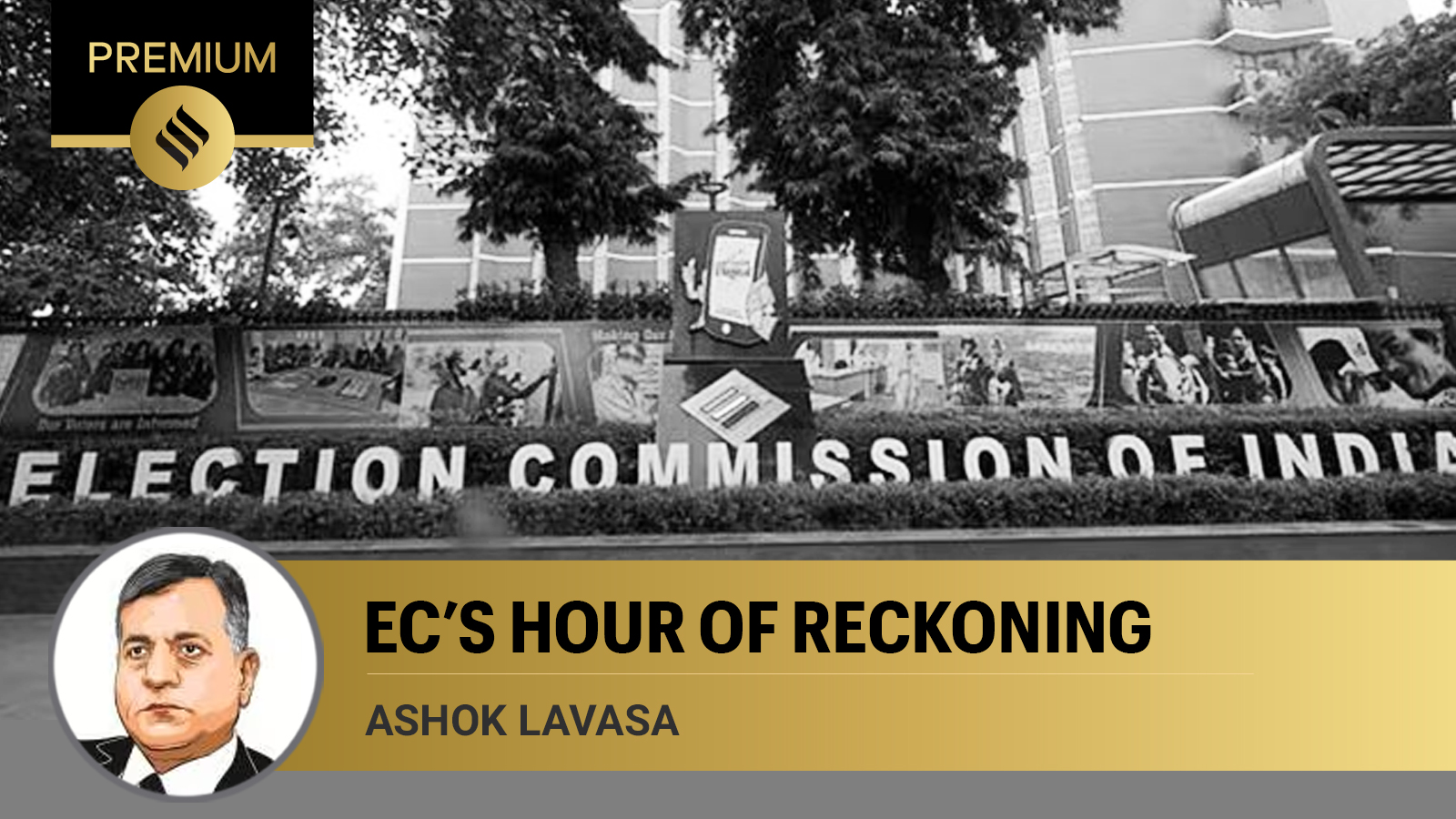
| Topic: GS2 – Polity – Constitutional Bodies This topic is relevant for both Prelims and Mains as this analysis delves into the role and importance of various constitutional bodies, providing insights into the functioning of democratic institutions in India. |
| Context: |
|
The Context of Constitutional Institutions:
- The Indian Constitution establishes various institutions crucial for democracy.
- These institutions serve different functions and maintain relationships with the government, either supportive, regulatory, or as a counterweight.
- Parliament oversees the government, while courts scrutinize laws and government decisions.
- Other bodies like the Attorney General, Comptroller and Auditor General, and Public Service Commission play specific roles in advising, auditing, and recruiting for the government.
The Unique Role of the Election Commission:
- Unlike other bodies, the Election Commission’s responsibility isn’t contingent on government actions.
- Its primary duty is ensuring free and fair elections, making it directly accountable to voters rather than the government.
- This unique role underscores the importance of examining the government’s intentions behind introducing and amending provisions in the CEC Bill.
Analysis of Key Provisions: Composition of the Selection Committee
- Initially constituted ad hoc by a Supreme Court order, the Selection Committee underwent changes with the exclusion of the CJI.
- This alteration raises questions about potential bias in the committee’s majority view, seemingly aimed at ensuring a predetermined outcome rather than consensus building.
Equivalence Issue:
- The status of the Chief Election Commissioner (CEC) was previously safeguarded akin to a Supreme Court judge.
- However, amendments in the CEC Bill proposed equating the CEC and Election Commissioners (ECs) with the Cabinet Secretary, sparking criticism.
- This move contradicted the existing provisions granting CEC and ECs status and salaries akin to Supreme Court judges.
Removal Process:
- The removal process of CEC and ECs was initially aligned with that of Supreme Court judges, promoting parity.
- However, final amendments led to a disparity in the removal process, maintaining impeachment for the CEC while allowing the President to remove ECs on the CEC’s recommendation.
Search Committee Composition:
- Replacing the Cabinet Secretary with the Law Minister as the Search Committee chair and omitting members with expertise in election matters from the original provision raises questions about the rationale behind these changes, especially given their significance to the electoral process.
Conclusion:
- The amendments in the final version of the CEC Bill reflect a lack of clarity and coherence in the government’s approach.
- While restoring the equivalence of CEC/ECs with Supreme Court judges, discrepancies in the removal process and changes in the Search Committee composition suggest a muddled thought process.
- These inconsistencies warrant further examination to understand the government’s true intentions behind these amendments.
| What are the Concerns Regarding the Bill? |
Transparency and Independence:
Shift from Judicial Benchmark to Executive Control:
Limiting Eligibility to Civil Servants:
Concerns About Lack of Parity:
|
Moving to a better count
| Topic: GS3 – Indian Economy – Issues relating to growth This topic is relevant for both Prelims and Mains in the context of understanding poverty trends, consumption patterns, and their implications for inflation and monetary policy. |
| Context: |
|
Trends in Poverty:
- The HCES 2022-23 introduces changes in consumption expenditure methodology, including item coverage, questionnaire alterations, and multiple data collection visits.
- Analysis of poverty trends reveals divergent estimates based on different methodologies, such as those proposed by the Expert Groups (Tendulkar and Rangarajan).
- While poverty ratios exhibit declines, disparities between methodologies underscore the need for cautious interpretation pending further detailed data analysis.
Discrepancy in Consumption Expenditure:
- An alarming disparity between private consumption expenditure estimates provided by NSSO and NAS raises concerns.
- Despite methodological improvements, the NSS share marginally increased in 2022-23, exacerbating the widening gap between NSS and NAS figures over time.
- Such discrepancies, exceeding 50%, necessitate thorough examination by the NSSO Advisory Group to improve data collection methods and ensure the accuracy of poverty ratio computations.
Changes in Consumption Patterns and CPI Implications:
- Analysis of consumption patterns between 2011-12 and 2022-23 reveals shifts, notably declines in the shares of food expenditure both in rural and urban areas.
- This decline, coupled with increases in shares of non-food items, prompts consideration for CPI adjustments.
- While a reduction in food shares suggests potential impacts on inflation levels, the extent of this impact remains uncertain given the persistent dominance of food expenditure in household budgets.
Conclusion:
- The summary results of the HCES 2022-23 illuminate critical issues ranging from poverty trends and consumption expenditure disparities to shifts in consumption patterns with implications for CPI and monetary policy.
- Addressing these issues requires careful analysis, methodological refinement, and policy adjustments to ensure accurate poverty estimations and informed economic policymaking in India.
| What is the National Statistical Office? |
About:
Function:
|

Why in News?
V-Dem Institute has the ‘Democracy Report 2024’ that tracks democratic freedoms worldwide.
What’s in Today’s Article?
- About D-Dem (Background, About the Report)
- Democracy Report 2024 (Major Highlights)
About V-Dem:
- The V-Dem Institute (Varieties of Democracy) was founded by Staffan Lindberg in 2014. Staffan Lindberg is a Swedish political scientist.
- The V-Dem institute studies the qualities of government.
- The headquarters of the project is based at the department of political science, University of Gothenburg, Sweden.
- The V-Dem Institute publishes a number of high-profile datasets that describe qualities of different governments, annually published and publicly available for free.
- These datasets are a popular dataset among political scientists, due to information on hundreds of indicator variables describing all aspects of government.
About Democracy Report:
- The V-Dem Institute publishes the Democracy Report that describes the state of democracy in the world, with a focus on democratization and autocratization.
- The report classifies countries into four regime types based on their score in the Liberal Democratic Index (LDI):
- Liberal Democracy, Electoral Democracy, Electoral Autocracy, and Closed Autocracy.
- The LDI captures both liberal (individual and minority rights) and electoral aspects (free and fair elections) of a democracy.
- It is based on 71 indicators that make up the Liberal Component Index (LCI) and the Electoral Democracy Index (EDI).
- The LCI measures aspects such as protection of individual liberties and legislative constraints on the executive.
- The EDI considers indicators that guarantee free and fair elections such as freedom of expression and freedom of association.
- Apart from these, the LDI also uses:
- Egalitarian Component Index (to what extent different social groups are equal),
- Participatory Component Index (health of citizen groups, civil society organisations),
- Deliberative Component Index (whether political decisions are taken through public reasoning focused on common good or through emotional appeals, solidarity attachments, coercion).
- The Democracy Report is published annually in March.
Key Findings of the Democracy Report 2024:
- The Democracy Report 2024 is a collaborative project involving 4,200 scholars from 180 countries, and is based on 31 million datasets that cover 202 countries from 1789 to 2023.
- Overall Findings:
- In 2023, 42 countries (home to 35% of the world’s population) were undergoing autocratization.
- 71% of the world’s population — 5.7 billion people — live in autocracies, an increase from 48% ten years ago.
- The level of democracy enjoyed by the “average person in the world is down to 1985-levels”, the report said.
- The sharpest decline occurring in Eastern Europe, and South and Central Asia.
- The report singled out freedom of expression, clean elections, and freedom of association/civil society as the three worst affected components of democracy in autocratising countries.
- In a separate section on the 60 countries that go to the polls in 2024, the report observed that more than half of these (31) were in periods of democratic decline.
- W.r.t. India:
- India, which was downgraded to the status of an electoral autocracy in 2018, has declined even further on multiple metrics to emerge as “one of the worst autocratizers”.
- As per the report, level of liberal democracy enjoyed by the average Indian now “down to levels last seen in 1975….when Indira Gandhi declared a state of emergency in India”.
- As per the V-Dem classification, a liberal democracy is one where, in addition to the requirements of electoral democracy such as regular free and fair elections, mechanisms for judicial independence and constraints on executive overreach are robust, alongside rigorous protection of civil liberties and equality before law.
- In an electoral autocracy — the category India falls into — multiparty elections coexist with insufficient levels of basic requisites such as freedom of expression and free and fair elections.

Why in news?
- The Ministry of Home Affairs (MHA) has notified the Citizenship Amendment Rules, 2024 that would enable the implementation of the Citizenship Amendment Act (CAA).
- The Act was passed on December 11, 2019, receiving assent from the President on December 12 the same year.
- The MHA had earlier notified that the Act will come into force from January 10, 2020. Since the rules were not framed yet, the Act could not be implemented.
What’s in today’s article?
- Citizenship Amendment Act (CAA)
- Citizenship Amendment Rules, 2024
The Citizenship (Amendment) Act (CAA) 2019:
- About:
- It seeks to amend the definition of illegal immigrant for Hindu, Sikh, Parsi, Buddhist, Jains and Christian (but not Muslim) immigrants from Pakistan, Afghanistan and Bangladesh, who have lived in India without documentation.
- They will be granted fast track Indian citizenship in 5 years (11 years earlier).
- The Act (which amends the Citizenship Act 1955) also provides for cancellation of Overseas Citizen of India (OCI) registration where the OCI card-holder has violated any provision of the Citizenship Act or any other law in force.
- Who is eligible?
- The CAA 2019 applies to those who were forced or compelled to seek shelter in India due to persecution on the ground of religion. It aims to protect such people from proceedings of illegal migration.
- The cut-off date for citizenship is December 31, 2014, which means the applicant should have entered India on or before that date.
- The act will not apply to areas covered by the Constitution’s sixth schedule, which deals with autonomous tribal-dominated regions in Assam, Meghalaya, Tripura, and Mizoram.
- Additionally, the act will not apply to states that have an inner-line permit regime (Arunachal Pradesh, Nagaland and Mizoram).
- Delay in notification of CAA rules
- One of the prime reasons is the vociferous opposition faced by the CAA in several states including Assam and Tripura.
- The protests in Assam were fuelled by fears that the legislation would permanently alter the demographics of the state.
- CAA is seen in Assam as a violation of the 1985 Assam Accord which allows foreign migrants who came to Assam after January 1, 1966 but before March 25, 1971 to seek citizenship.
- Cut-off date for citizenship under the CAA is December 31, 2014.
- The protests didn’t remain confined to the North-East, but spread to other parts of the country.
- Multiple petitions are before the Supreme Court, challenging the constitutional validity of the CAA.
- The petitioners have contended that the law is anti-Muslim, violating Article 14 (Right to Equality) of the Indian Constitution.
- It is arbitrary as it leaves out the persecuted Rohingya of Myanmar, Tibetan Buddhists from China and Tamils from Sri Lanka.
Citizenship Amendment Rules, 2024
- The process
- Eligible refugees seeking citizenship through registration or naturalization must submit an application along with an affidavit confirming the accuracy of the statements made in it.
- Additionally, they need an affidavit from an Indian citizen vouching for their character and a declaration stating their familiarity with one of the languages listed in the eighth schedule to the Constitution of India.
- E-application to the district-level committee
- The rules require the application to be submitted electronically to an empowered committee via the district-level committee, as notified by the central government.
- Once the application is submitted, the district-level committee, headed by a designated officer, will verify the documents.
- It will also administer the oath of allegiance to the applicant.
- If an applicant doesn’t show up in person to sign the application and take the oath of allegiance, despite being given chances, the district-level committee will send the application to the empowered committee to consider rejecting it.
- Supporting documents
- Applicants must provide supporting documents such as:
- passport issued by the governments of Pakistan, Afghanistan, or Bangladesh,
- a birth certificate,
- any form of identity document, land or tenancy records, or
- any document proving that the applicant’s parents, grandparents, or great-grandparents were citizens of one of the three countries.
- These documents remain valid even beyond their expiration dates.
- Until now, these migrants were either living in India illegally or on long-term visas.
- Applicants must provide supporting documents such as:
- Verification of entry date
- Applicants also have to provide proof that they entered India before December 31, 2014.
- 20 supporting document for this can be of:
- either a visa and immigration stamp, registration certificate from the Foreigners Regional Registration Officer (FRRO),
- or slip issued by the Census enumerators in India, government-issued licence or certificate
- permit in India (including driving license, Aadhaar number, ration card),
- marriage certificate issued in India etc.
- Digital certificate
- Once an application is approved, the applicants will be issued a digital certificate.
New rule has changed the producers to grant citizenship
- Earlier, citizenship applications were made to the district collector, who is under the administrative control of the state government.
- The new rules provide for an empowered committee and a district level committee to be instituted by the Centre for receiving and processing the applications.
- These applications are to be submitted electronically.
- The empowered committee would be headed by a director (census operations).
- Other members include:
- deputy secretary or above officer of the Subsidiary Intelligence Bureau, the FRRO,
- state informatics officer of the National Informatics Centre,
- postmaster general of the state.
- There would also be two invitees to the committee:
- a representative from the office of principal secretary (home) or additional chief secretary (home) of the state government or UT concerned; and
- a representative of the Railways’ jurisdictional divisional railway manager.
- Other members include:

Why in News?
- The Supreme Court dismissed a plea by the State Bank of India (SBI) to extend the deadline for providing details of electoral bonds purchased anonymously and their encashment by political parties to June 30, 2024. A five-judge Bench (headed by the CJI) gave the bank 24 hours to provide the details to the Election Commission of India (ECI).
What’s in Today’s Article?
- Background of the Issue
- Why did SBI Seek more Time to Comply?
- What did the Contempt Plea Stipulate?
- What did the Top Court Say?
Background of the Issue:
- The petition was filed in the aftermath of the SC’s verdict striking down the electoral bonds scheme (EBS), where the Court had directed the SBI to furnish details of the bonds to the ECI by March 6, 2024.
- These details were to include the date of purchase of each bond, the name of the purchaser of the bond and the denomination of the bond purchased.
- The ECI was subsequently ordered to publish all such information shared by the SBI on its official website by March 13, 2024.
- The court was also hearing a contempt plea filed by NGOs (ADR and Common Cause) against the SBI Chairman.
- The plea contends that the bank was deliberately trying to ensure that details were not disclosed to the public before the Lok Sabha elections due in April-May.
- Analysis reveals that the BJP was the scheme’s greatest beneficiary.
Why did SBI Seek more Time to Comply?
- The bank said that the information and documents were scattered across its various branches and decoding them was a “time-consuming exercise.”
- The data related to the issuance of the bond and data related to the redemption of the bond were recorded “in two different silos.”
- This was done to ensure that donors’ anonymity was protected.
- The Court was also informed that donor information was kept in a sealed cover at the selected branches and thereafter deposited in the organisation’s main branch in Mumbai.
- It can thus be noted that both sets of information were being stored independently of each other.
- Thus, to re-match them would be a task requiring a significant amount of effort.
- The SBI added that –
- While some details such as the number of bonds issued are stored digitally,
- Others such as the names of the purchasers and KYC documentation are stored physically in its various branches to “achieve the object of the scheme.”
What did the Contempt Plea Stipulate?
- All electoral bond-related work was overseen by a specific team of the SBI called the Transaction Banking Unit (TBU) to ensure that the government can access crucial information on a short notice.
- The petitioners claimed that the SBI maintains a secret number-based record of donors who buy bonds and the political parties to which they donate.
- Additionally, each electoral bond also possessed a unique number making it easier to trace it.
- A simple query on the database can generate a report in a particular format which does not require any manual verification.
- The petitioners pointed out that the SBI had enough manpower to retrieve the information within the stipulated deadline.
- Even the EBS makes it mandatory to disclose information furnished by a buyer when demanded by a competent court.
What did the Top Court Say?
- The CJI pointed out that the judgement had not asked the bank to “match” information to ascertain who contributed to which parties and only wanted a “plain disclosure”.
- He asserted that the SBI in its own application said that such information was “readily available”.
- The Bench stated that it did not wish to initiate contempt proceedings against the SBI, but it was putting the bank on notice and would take action if the SBI failed to comply.

Why in news?
- India has announced the successful testing of an Agni missile capable of carrying multiple warheads meant to hit multiple targets simultaneously.
- The test was carried out from Dr APJ Abdul Kalam Island off the Odisha coast.
- The success of Mission Divyastra was announced by PM Modi.
- This technology will ensure that a single missile can deploy multiple war heads at different locations.
- This system is equipped with indigenous avionics systems and high accuracy sensor packages, which ensured that the re-entry vehicles reached the target points within the desired accuracy.
What’s in today’s article?
- Multiple Independently Targetable Re-entry Vehicle (MIRV) technology
- Agni Missiles
- Agni-5 missiles
Multiple Independently Targetable Re-entry Vehicle (MIRV) technology
- About
- The MIRV can target multiple targets that can be hundreds of kilometers apart with a single missile.
- As of now, the United States, Russia, China, France and the United Kingdom are known to have MIRV-equipped missiles.
- While Pakistan is developing such a missile system, Israel too is suspected to either possess the missile or be developing it.
- These missiles can be launched from land or from sea (or from a submarine).
- Background
- MIRVs were originally developed in the early 1960s to allow a single missile to carry multiple nuclear warheads, each capable of striking different targets.
- The inception of MIRV technology was done by the United States with deploying:
- a MIRVed Intercontinental Ballistic Missile (ICBM) in 1970 and
- a MIRVed Submarine-Launched Ballistic Missile (SLBM) in 1971.
- What makes MIRV technology especially lethal?
- In contrast to a traditional missile, which carries one warhead, MIRVed missiles warheads can be released from the missile at different speeds and in different directions.
- The development of MIRV technology is not easy.
- It requires the combination of large missiles, small warheads, accurate guidance, and a complex mechanism for releasing warheads sequentially during flight.
- India and MIRV
Agni Missiles
- About
- Over the years, India has been able to acquire a credible minimum nuclear deterrence. In this, the Agni missile system is integral to India’s counter second-strike capability especially against China.
- The Agni category missiles are solid propelled ballistic missiles, ranging from short range missiles to intermediate range missiles (700-5000kms).
- The road and rail mobility of this series provides greater chances of survivability.
- History of Agni Missiles
- The Agni missile is a component of the Integrated Guided Missile Development Program (IGMDP) that was launched by India in 1983.
-
- In 1989, India test fired Agni 1 category missile
- Missiles in Agni Family
- The family consists of short to long range surface to surface ballistic missiles. These are
- Agni I – short-range ballistic missile (range – 700 to 1200 km)
- Agni II – medium-range ballistic missile (range – 2000 to 3500 Km)
- Agni III – intermediate-range ballistic missile (range – 3000 to 5000 Km)
- Agni IV – intermediate-range ballistic missile (range – 3500 to 4000 Km)
- Agni V – Inter-continental ballistic missile (range -5500 to 8000 Km)
Agni-5 missiles
- Agni is a long-range missile developed indigenously by DRDO.
- This latest variant of the missile is equipped with what is known as MIRV (Multiple Independently Targetable Re-entry Vehicle) technology.
- This Agni, capable of carrying nuclear warheads, has a range of more than 5,000 km, making it a long-range missile.
- India announced the development of Agni V in 2007.
- The maiden flight test of Agni-V was conducted in April 2012.
- Agni-V uses a three-stage solid fuelled engine and can reach most parts of China. It is aimed mainly at thwarting the challenge from China.
